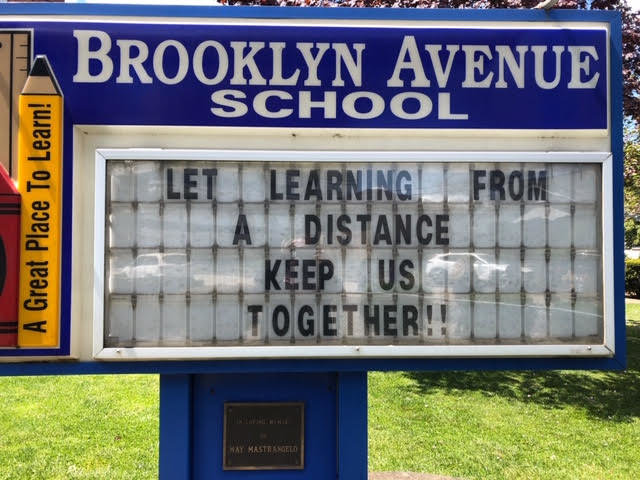V.S. teachers get virtual amid pandemic
The coronavirus has forced a reckoning in academic instruction. Unable to interact with their students in person, teachers have switched to virtual tools to retain some semblance of continuity for their students.
In Valley Stream District 24, teachers have been relying on a number of online video chat and sharing services, primarily through Google, such as Classroom, Hangouts, Meets, Form, and Fly, as well as other tools such as Loom Video and Class Dojo for lessons and assignments.
“The circumstance to which virtual teaching has occurred is sad and I would have rather us not go down this road,” District 24 Schools Superintendent Dr. Don Sturz said. “However, teachers are evolving and developing and they are doing the best they can.”
Some teachers in the district said they have found some aspects of online teaching beneficial, but miss the camaraderie of in-person instruction as well as the social and emotional interactions that come with it.
“It’s hard for students not to see their teachers every day,” said Kathleen Carter, a sixth-grade teacher at Brooklyn Avenue Elementary School. “There’s a disconnect.” “Virtual learning is not the way I prefer to teach,” she added.
In addition to missing her students, Carter said she finds that certain aspects of teaching have been lost in the switch to online.
“I feel teaching is a personal experience and a performance,” she said. “Having to teach online with technology has broken the connection and has imposed a twist on the performance aspect of teaching.”
Carter said, however, that she is in some ways better able to monitor her students’ progress using the digital tools.
“I can see immediately what they did online, and give immediate feedback online,” she said. “Whereas, in the classroom I have more students seeking help at once. There has been a dramatic change in the teaching experience behind a screen, but I have done my best to better my teaching approach.”
She said she is also able to meet some of more individualized needs of students who might be struggling, organizing smaller video chats.
“Rather than having the whole class online, I invite certain students to Google Meets who don’t understand certain topics and their individual needs can be met through targeted instruction,” Carter said. “Students can be more open and comfortable because it helps them to know that other people in that group were also having trouble.”
Brooklyn Avenue fifth-grade teacher Leigh Nahman-Tamburello said she has had a generally good experience with online teaching, but was clear to note that it would never truly replace the classroom setting.
“I miss being one unit with my students,” she said. “However, I have had a positive experience teaching and the students have adapted and embraced this new form of learning.”
The transition out of the classroom did present some obstacles at first, Nahman-Tamburello said, particularly with math and science lessons.
Even though the instructing transition was smooth for Nahman-Tamburello, it did not come without some adjusting. At first, teaching math and science lessons presented some challenges.
“Virtual learning does impact the way they learn, but my students have risen to the challenge,” she said. “I had a little difficulty with math and science, but I have adapted by using videos to give them real life examples and songs to learn from.”
Although how and when students might be able to return to the classroom, remains unknown, Nahman-Tamburello said she has high hopes that she will be able to return to her accustomed way of teaching. Until then, she said, learning must go on.
“Teachers are stronger and more united than ever and I just hope for a return to the classroom, so we can pick up where we left off,” she said. “I came to the conclusion that I chose this profession because I know the impact of teachers lasts forever and I want kids to feel safe, loved and important face to face or through a screen.”

 48.0°,
Overcast
48.0°,
Overcast 




